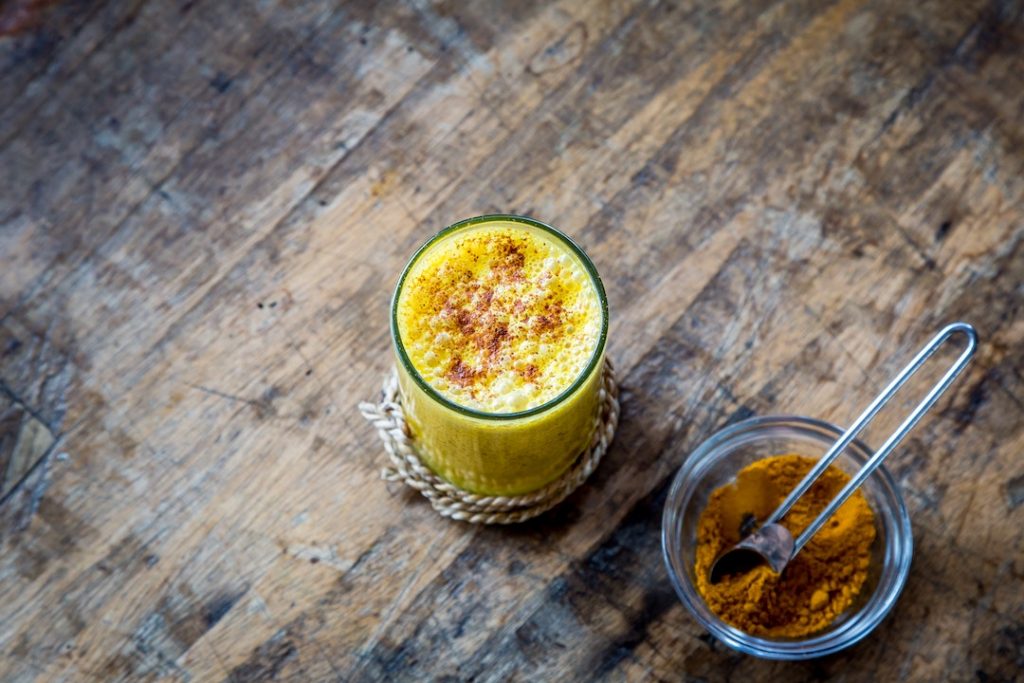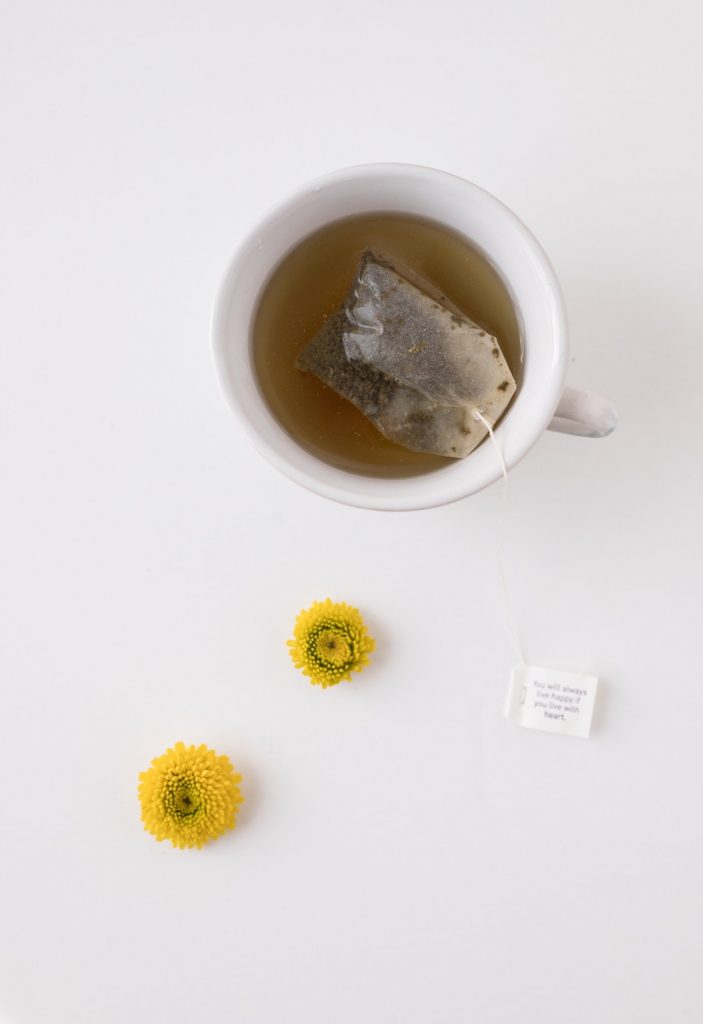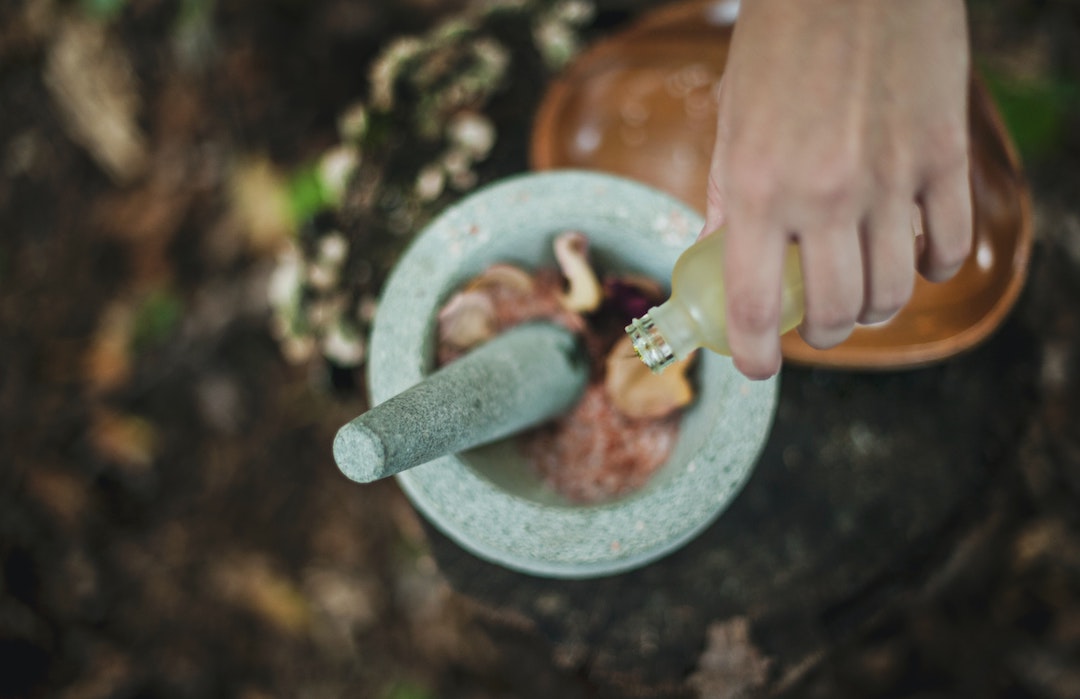Have you reached that point in quarantine where you’re tempted to start cutting your own hair? Trust me, I’m right there with you! But until we can go back to our much-loved spas and salons, I’d say it’s probably best to back away from the scissors and focus your energy on something a little less risky instead. Enter: DIY skincare treatments.
Asia is seriously ahead of the game when it comes to skincare, so we’re looking to countries like Japan and India for tried-and-true ingredients that have endured for centuries and are still being used today.
Not only are these ingredients incredibly DIY-friendly, but you’d be surprised at how many are already sitting in your pantry.

1. Rice water
Rice water has been a staple in East Asian beauty regimens for centuries, and now the rest of the world is starting to realise just how fantastic this superstar ingredient is.
For starters, rice water is bursting with amino acids and a compound called inositol, which helps to strengthen damaged hair and repair it from the inside out.
Fermented rice water, on the other hand, is especially beneficial for skin thanks to a combination of antioxidants, minerals, and vitamins B and E. These compounds work to smooth and purify your complexion, reducing the appearance of pores, fine lines, and acne scars in the process.
The best part? Rice water just so happens to be remarkably simple to make yourself. If you have rice in your cupboard, you can make a DIY version of rice water right now. It’s almost as easy as covering white rice with water and letting it soak for a few hours. You can find step-by-step instructions for a rice water skin cleanser here.

2.Turmeric
While turmeric has taken the superfood trend by storm in recent years, this sacred spice has been used in traditional Ayurvedic practices for centuries, added to food and lauded for its medicinal properties.
From a health standpoint, turmeric’s wide-ranging benefits know no bounds. Studies have shown that curcumin, an active compound found in turmeric, can help to promote wound healing, ease inflammatory conditions, and even reduce the effects of arthritis.
And it’s virtually the same in the world of beauty: when added to skincare products or applied topically, turmeric boasts a whole host of beautifying benefits, from decreasing UV damage to banishing blemishes and boosting collagen.
For decades, Indian and Pakistani brides have used turmeric to purify and brighten skin before their wedding day, and it’s about time we caught on to their best-kept beauty secret.
If you have some turmeric lying around, it’s relatively easy to whip up a DIY face mask that will leave your skin looking flawless.

3. Green tea
You don’t have to be a tea drinker to reap the benefits of this ancient Asian brew. Green tea’s powerhouse properties — namely polyphenols and an antioxidant called EGCG — are renowned for their health-boosting effects, but they’ll also leave your skin glowing and gorgeous when applied topically.
Green tea is loaded with anti-ageing, anti-inflammatory, and antibacterial benefits. Not only do these properties counter the effects of free radicals and sun damage (AKA age spots and fine lines), but they also work to improve your overall complexion.
If you’re keen to add green tea to your skincare routine, start with DIY toner (let two cups cool after brewing, and then apply to your face with a cotton ball), or combine cooled green tea with rosewater for a calming and hydrating facial mist.

4. Rose oil
Rose oil (not to be confused with rosehip seed oil) is the essence derived from delicate rose flowers. It’s packed with vitamins A and C, along with loads of other minerals and antioxidants, making it a must-have ingredient for dry, sensitive, and mature skin.
This heavenly-scented oil also offers antiseptic properties to benefit acne-prone skin, as well as anti-inflammatory properties that help soothe irritation and redness — so you can use it for just about any skin issue you’re dealing with.
No matter how you choose to incorporate it into your regimen — whether it’s applied directly to the skin or added to your face cream — this is one game-changing ingredient you’ll want to add to your self-care routine ASAP.

5. Gram flour
Made from ground dried chickpeas, gram flour has long been used across the Indian subcontinent to cleanse and exfoliate skin.
Not only is gram flour loaded with anti-inflammatory and alkalizing properties, but it also helps to absorb and remove excess oil without drying out the skin, making it beneficial for almost all skin types.
When mixed with other simple ingredients — like aloe vera, turmeric, or rose water — gram flour makes for a face mask that’ll draw out impurities and leave your skin looking noticeably more radiant.


